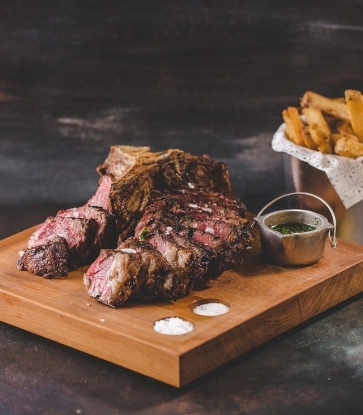Time is of the essence when it comes to cooking a fine meal. Imagine a bowl of Cantonese-style soup, for instance, and the hours it takes for nuanced flavors to be coaxed out of the many ingredients put into the pot and left to simmer. Or a fine piece of meat, sliced too soon, only to have all its beautiful intense juices spilling out across the cutting board.
How true is it, then, that certain foods really do taste better when left to rest for an extended length of time? As science would have it, the idea of food rest is certainly no old wive's tale.
Spice and All Things Nice
No, food rest isn't always needed. But there are certain dishes that you may want to keep for leftovers the next day.

Take a deep dish of paprika-spiced lobster mac n' cheese, for instance. Or a pot of braised pork belly in a thick sweet gravy. For one, these dishes are loaded with fats, so the richness of all the flavors hold up well. The spices used to lace the sauces also get better over time—strong spices like star anise and cloves might be too overwhelming on the palate the first day the dish is made, but their aroma and taste tends to mellow after awhile, thus balancing out the richness of the dish.
Stew and Simmer
Ever wondered why dishes such as stews and casseroles that don't rely heavily on spices also taste better the day after? It comes down to the types of cuts used in these stews.
Often, cheaper cuts of meat such as brisket or tendons are left to simmer in pots of bubbling gravy and slow-cooked for hours to break down their chewy texture. Once cooled, or left in the fridge overnight, the collagen in these cuts breaks down into a gelatinous consistency that absorbs all the flavors of the gravy and infuses it into the meat.

Cutting Edge
Even though the temptation is hard to resist, grilled steaks benefit from food rest, too. Chef Gordon Ramsay himself is a big believer in letting a seared steak sit for a good few minutes before slicing it open and revealing tender pink slices of meat.
At Moosehead in Singapore, all meats that come off the restaurant's Inka grill are left to rest for at least the same amount of time that they are cooked.
"We rest our meat for a few reasons,” says head chef Seumas Smith. “The first being that when you cook meat, the higher the heat and the longer the time, the more the proteins contract—it tightens up."
The meat thus needs to be rested to relax the fibers and keep the juices locked in. Slicing the meat too quickly will let all the juices seep out, leaving a tough piece of steak. Also of note, food rest depends on the cuts and types of meat used as well.
"For example, the flank steak can take around 40 minutes in total, from cooking and resting. But pork ribs have less water content than than a flank, and is not as important to rest," says Smith. "With our burgers, seeing as they are done up with 60% ground beef and 40% fat, we don't rest it—otherwise the fat would set and cause the burger to be very dry."





















